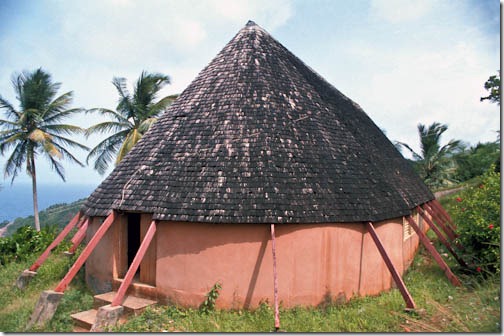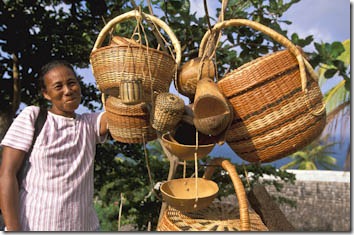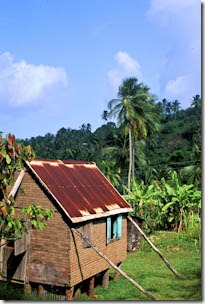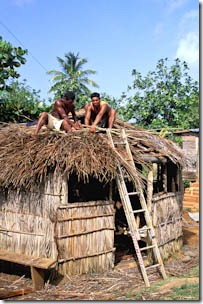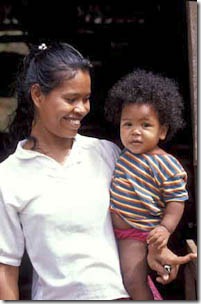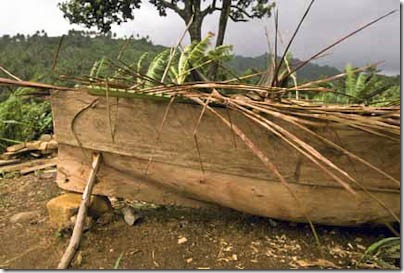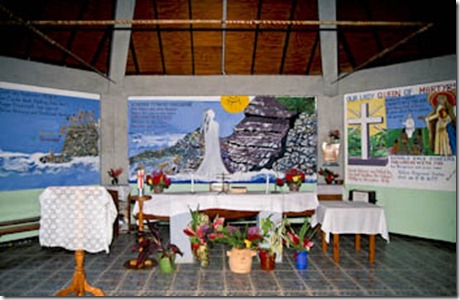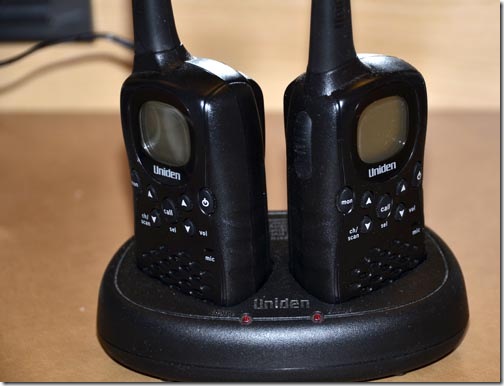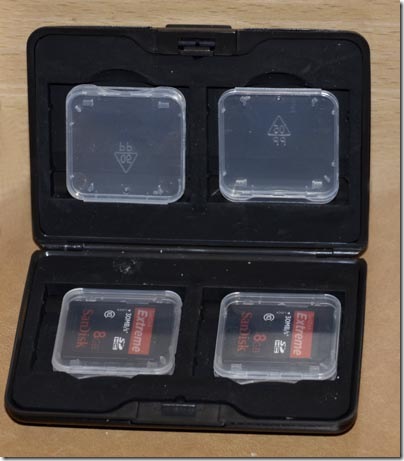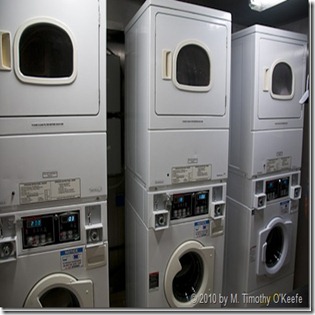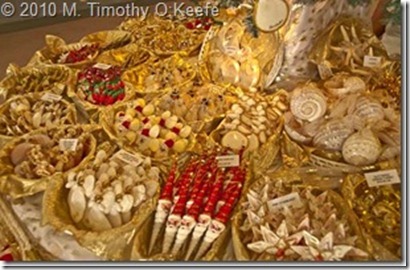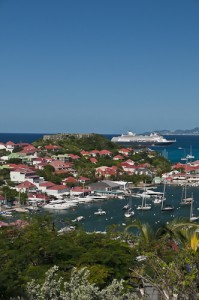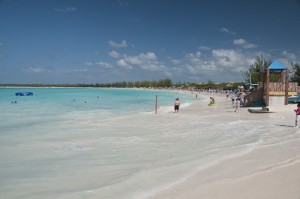Looking down on the St. Vincent cruise terminal at Kingstown
THIS is where the notorious Capt. Bligh left his lasting mark
The main reason Linda and I chose this 35-day Maasdam itinerary is because the ship stops at places most cruise lines don’t. The island of St. Vincent in the Grenadines was a major attraction because I hadn’t seen it for far too long. With scuba diving now on my back burner, a cruise is my best way back to St. Vincent.
Based on yesterday’s post about Carib Indian history, what does St. Vincent have to do with the topic? One of its major attractions is the oddity of the cannon placement at Fort Duvernette, located 195 feet and 250 steps above the Caribbean. The unfortunate soldiers involved in its construction in the 1800s had to haul the cannons to the top. Once at the summit, the cannons were not aimed seaward–all the cannons face inland.
The British were terrified of the fierce Carib Indians who waged a bloody 7-year war from their mountain hideouts. The Vincentians proudly claim their country is the only place in the hemisphere where a fort was designed to repel invaders from the land instead of the sea. Some of the local literature, however, doesn’t make it clear that the Caribs were their greatest threat, not other European soldiers.
The Caribs may not have their own Territory here as in Dominica but their heritage survives. They intermarried with the black slaves brought over to work the sugarcane, a mix that accounts for the heritage of most present day Vincentians.
The Maasdam at dock in St. Vincent
St. Vincent is a late-comer when it comes to Caribbean cruising. Cruise ships didn’t start visiting St. Vincent until 1999 but passengers had such bad experiences with hustling locals (think Jamaica and the panhandlers on the beach) and the poor condition of the capital and cruise port of Kingstown that cruise ships became scarce. Tourism officials learned a lesson and in 2006 St. Vincent received one of “The Most Improved Destination” awards from Dream World Cruise Destinations magazine.
The cruise dock is located at the edge of Kingstown and the small terminal building is among the Caribbean’s most user friendly. It’s an easy walk into town from here but seeing the real St. Vincent and its St. Lucia rain forest-like lushness requires a cab or a tour. One popular stop is Fort Charlotte but of special interest is the village of Barraouallie beyond it, not only a fishing but a whaling community.
That’s right–whaling from nothing more than an unusually long motorized canoe. Whaling in St. Vincent has a long tradition, but in truth the Vincentians do the whale population little damage. The harpoon is thrown by hand, which almost requires the harpoonist to stand over a whale and drive the point in with the force of his own weight. Whales are taken only once in several years, so the whaling industry is hardly a thriving or threatening one.
Entrance sign to New World’s oldest botanic gardens
My own interest is to revisit St. Vincent’s famous Botanical Gardens. Founded in 1765 , by General Robert Melville, Gov. of the Windward Islands. These 20-acres comprise the oldest botanic gardens in the Western Hemisphere. At that time, they were administered by the British War Office and charged to cultivate and improve native plants and to import others from similar climates that would improve the island’s resources. From St. Vincent, some of these plants went out to other islands, which not only dramatically changed the islands’ foliage but added new food sources for both settlers and slaves.
The gardens’ most famous plant is also one of the Caribbean’s most important: a “cutting” from the original breadfruit tree brought from Tahiti by Capt. William Bligh in 1793 from Tahiti, Polynesia. This is the same Capt. Bligh of the famous in 1789 Bounty mutiny. Not only was he a skilled navigator–it’s amazing he and his crew survived the mutiny–but obviously a skilled horticulturist since young plants on a long voyage had to be maintained since the seeds of breadfruit die quickly when stored. From St. Vincent, breadfruit was introduced to the rest of the Caribbean.
Sign marking Capt. Bligh’s famous breadfruit tree
St. Vincent’s breadfruit “cutting” has grown into an enormous tree, probably at least 85 high, the tallest they grown. Many say breadfruit as tasting potato-like or freshly baked bread. Those are polite descriptions of what I consider to be dry and tasteless, perhaps my least favorite of Caribbean “vegetables.” Being Irish, I know a little bit of how potatoes are supposed to taste. To breadfruit, I say “yuck!”
Despite not wanting to eat breadfruit, standing in front of Capt. Bligh’s massive and historic 200-year old tree is a surprisingly humbling feeling. Breadfruit and other plants first planted here truly changed the Caribbean landscape. But St. Vincent can’t be blamed for introducing sugarcane into the Caribbean, which needed a huge labor supply for harvest and the need for cheap slave workers. That was introduced into the Caribbean from Brazil via Barbados, the home of Caribbean rum.
The taxi ride from the cruise dock to the Botanical Gardens, a mile from Kingstown up a steep hill, was just $10. That fee included the driver waiting until after we toured and a return to the Maasdam.
Instead, to the surprise of the driver, Linda and I paid him the $10 and bid him good-by. I wanted to walk back to the ship and see what present-day Kingstown looked like. For a photographer, roaming by foot is the only way to travel. Especially when it is downhill.
This post barely touches on what there is to see and do in St. Vincent. On the other hand, the Maasdam excursions were limited, ignoring the island as a good dive destination. For more info, check out the St. Vincent and Grenadines website at http://www.discoversvg.com/
Leaving Kingstown, St. Vincent

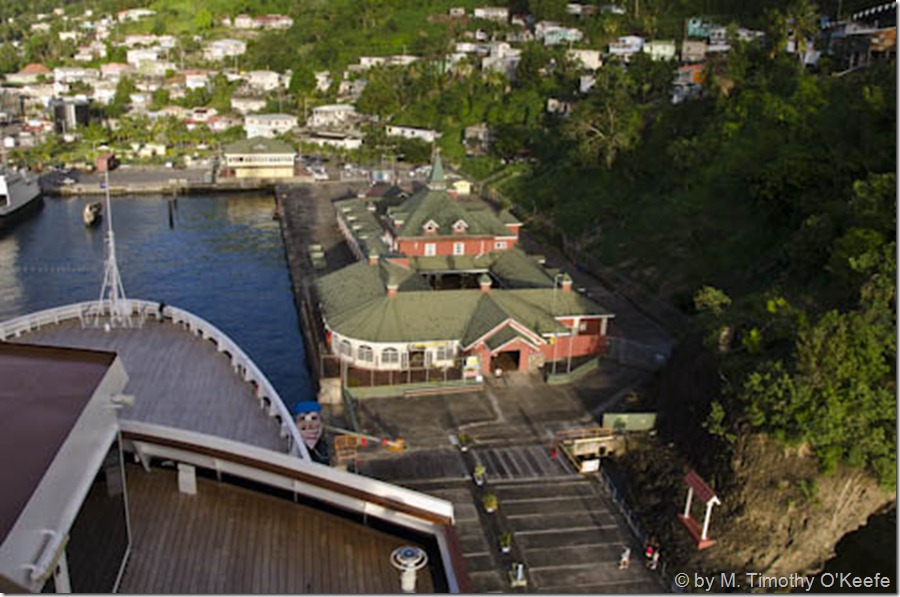
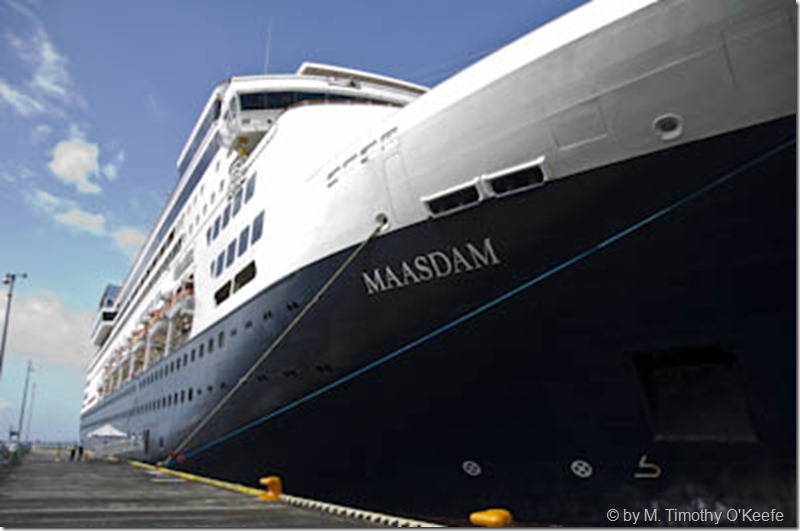
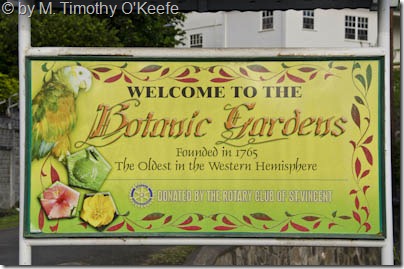
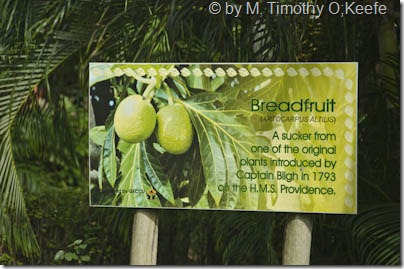
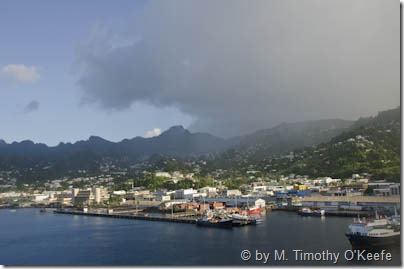
 Follow
Follow